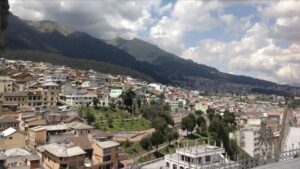Abstract/Description
The forest line is a key feature of mountain landscapes around the world. Currently, most forest lines in the Northern Hemisphere are rising due to the combined effects of land-use and climate changes, leading to major changes in the adjacent alpine grasslands and subalpine forests functions. However, it has not been elucidated how the recent forest-line upward shift fits into the longer context of land abandonment, and how it is currently responding to the accelerating global warming. To answer this question, we assessed the forest-line elevation change over the French Northern Alps since the forest minimum using historical and current land cover maps, displaying forest cover at four dates: 1860, 1951, 1995 and 2007. These maps were standardized and combined with a digital elevation model to estimate the average forest-line elevation for 150 municipalities across three French departments of the Northern Alps: Haute-Savoie, Savoie and Isère. We compared forest-line elevations between dates and municipalities to explore temporal and spatial patterns. The forest line in the French Northern Alps was stable between 1860 and 1951, and then rose by 166 m, from 1865 m a.s.l. in 1951 to 2031 m a.s.l. in 1995. From 1995 to 2007, no general upward shift was observed and in the Haute-Savoie department, a downward shift of 5.3 m.yr-1 was even noticed, while forest lines in Isère and Savoie were stable. Forest-line upward shift in the French Northern Alps has been driven by pastoral abandonment and global warming. However, forest-line dynamics did not follow the recent acceleration of temperature increase. Its current limitation may be attributed to pastoral and tourism contemporary pressures. This regional study on long temporal scale shows how global and regional drivers interact in the long-term to shape mountain landscapes. Today, the forest-line dynamics is still linked to the contradictory tensions dividing our societies (conservation vs. exploitation). Thus, we advocate the cautious management of the adjacent alpine grasslands and subalpine forests, which could contribute to carbon sequestration and biodiversity conservation, provided they are not subjected to excessive human pressure.


